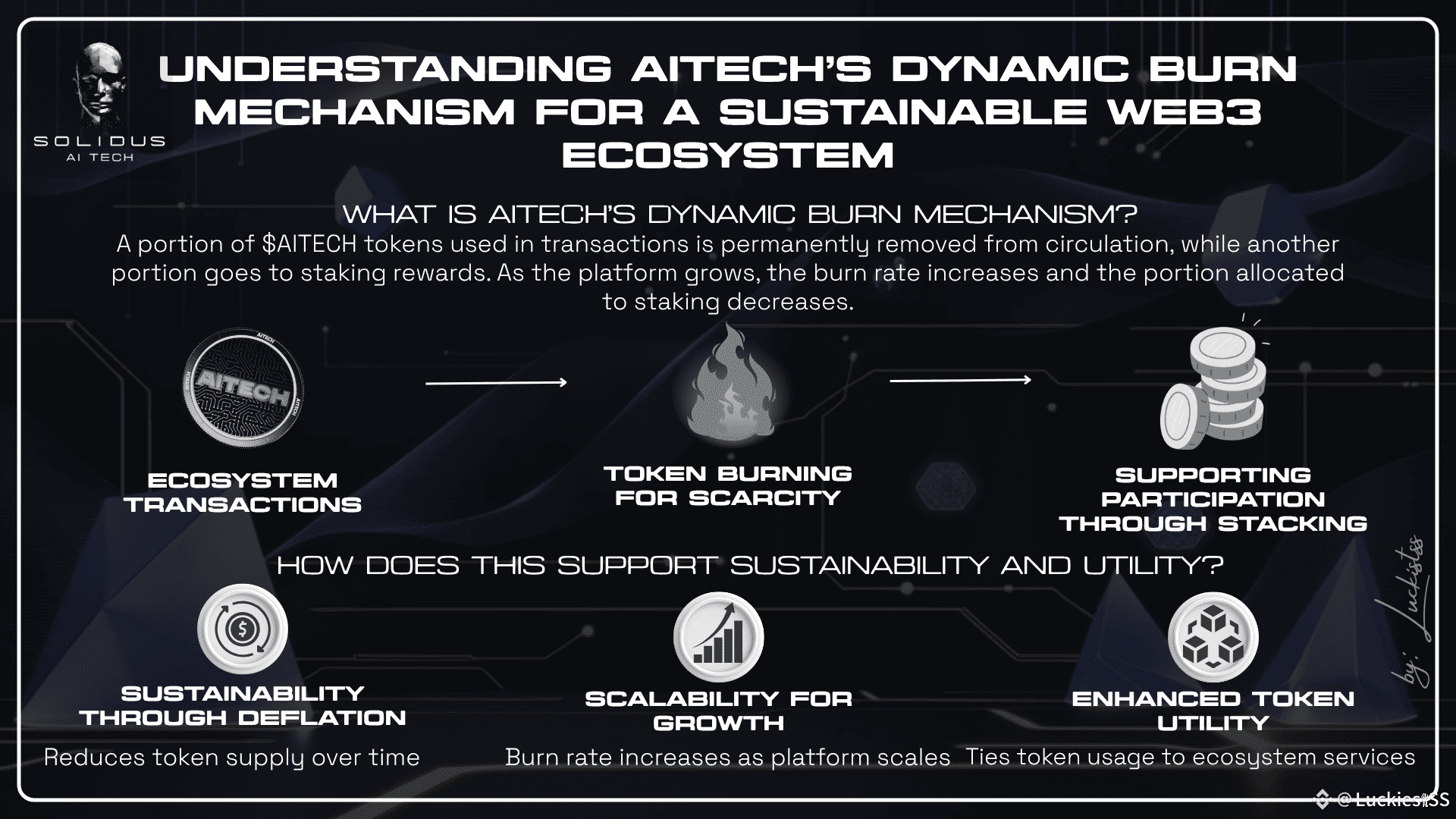
AITECH’s dynamic burn mechanism is engineered to optimize tokenomics within its Web3 ecosystem. The $AITECH token is fundamental to Solidus AI Tech’s GPU and AI marketplace operations, as well as its launchpad. Here’s how it actually works from a technical standpoint:
For every transaction, 5-10% of the platform’s profit is permanently removed from circulation—burned on-chain—directly reducing total supply. This scarcity mechanism is designed to support the token’s value over time.
Initially, 8-10% of transaction profits are allocated to staking pools. Users who stake $$AITECH eive tangible rewards, incentivizing early participation and active engagement. As the platform scales, the proportion dedicated to staking rewards gradually decreases, while the burn rate increases (potentially up to 10%). Eventually, staking rewards phase out, converting the model to a fully deflationary one.
What differentiates AITECH’s system from typical fixed-rate burns is its dynamic adjustment. The ratio between burning and staking shifts in direct response to network activity. All burns are fully transparent and verifiable since they occur directly on-chain.
Functionally, $AITECH is required for core activities—GPU rentals, purchasing AI tools, and accessing new launch opportunities. This ensures the token’s utility remains high, directly tying ecosystem adoption to token demand.
Key benefits include a deflationary supply model counteracting inflation, scalable tokenomics that adapt to network growth, and an incentive structure that rewards early adopters while supporting long-term ecosystem value.
In summary, AITECH’s dynamic burn mechanism is designed to sustain and balance ecosystem growth, participation, and token value. For deeper technical documentation or analytics, visit aitech.io or their profile on Binance Alpha.

